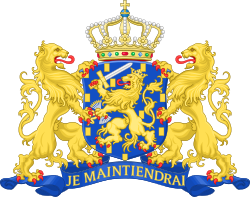Second De Geer cabinet First London cabinet | |
|---|---|
| Cabinet of the Netherlands | |
 The first meeting of the Second De Geer cabinet on 6 September 1939 | |
| Date formed | 10 August 1939 |
| Date dissolved | 3 September 1940 (Demissionary from 26 August 1940) |
| People and organisations | |
| Head of state | Queen Wilhelmina |
| Head of government | Dirk Jan de Geer |
| No. of ministers | 11 |
| Member party | Roman Catholic State Party Social Democratic Workers' Party Anti-Revolutionary Party Christian Historical Union Free-thinking Democratic League |
| Status in legislature | National unity government (War cabinet) |
| History | |
| Legislature terms | 1937–1946 |
| Outgoing formation | 1940 Dutch cabinet formation |
| Predecessor | Fifth Colijn cabinet |
| Successor | First Gerbrandy cabinet |
| This article is part of a series on |
| Politics of the Netherlands |
|---|
 |
The Second De Geer cabinet, also called the First London cabinet, was the cabinet of the Netherlands from 10 August 1939 until 3 September 1940. The cabinet was formed by the political parties Roman Catholic State Party (RKSP), Social Democratic Workers' Party (SDAP), Anti-Revolutionary Party (ARP), Christian Historical Union (CHU) and the Free-thinking Democratic League (VDB) following the dismissal of the Fifth Colijn cabinet by Queen Wilhelmina on 27 July 1939. [1] It was the first government to include the social democratic SDAP, up to then they had been excluded from government by the other political parties. The national unity government became a War cabinet on 14 May 1940 following the German invasion and fled to London. The government-in-exile was dismissed by Queen Wilhelmina on 26 August 1940. [2]










